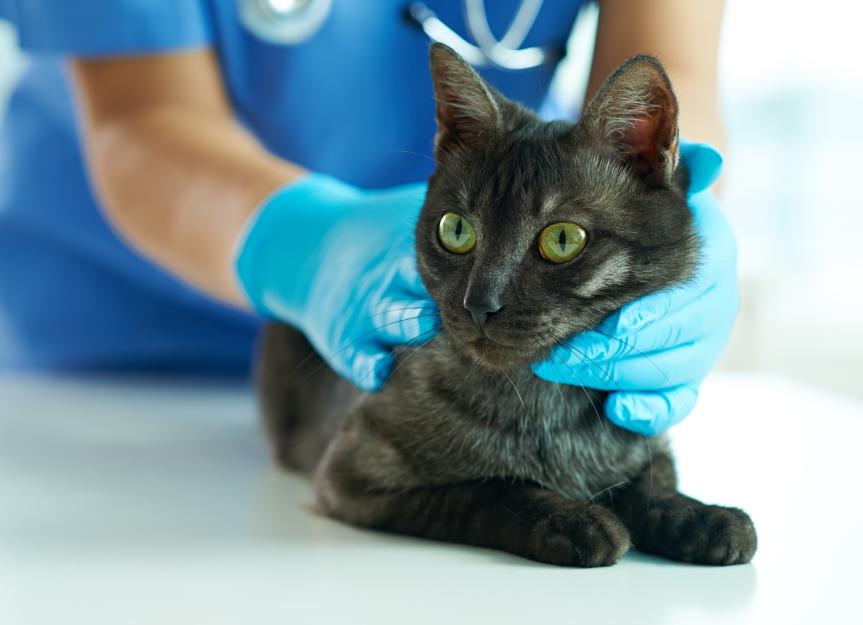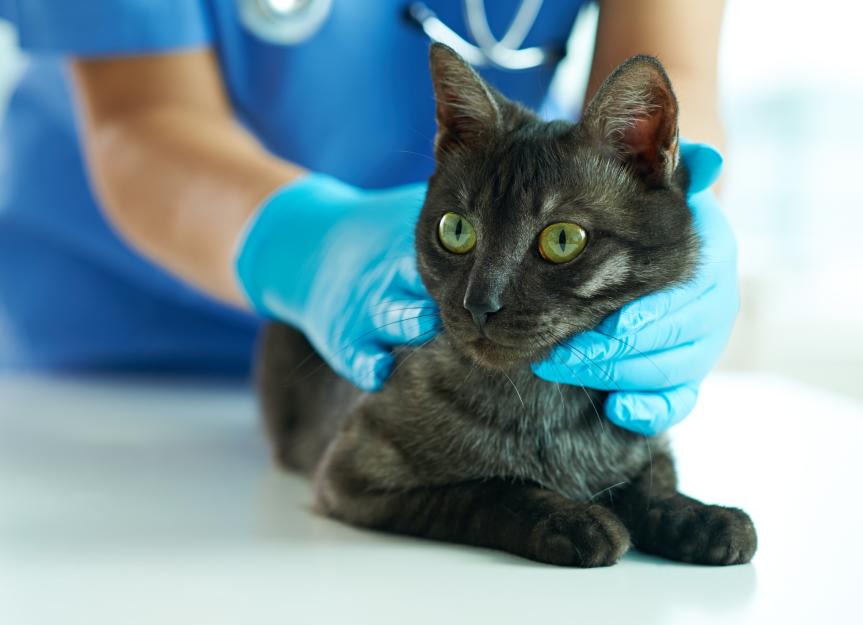
Feline infectious peritonitis (FIP) is a rare disease in cats, but its effects are devastating.
FIP in cats causes a variety of symptoms, which makes it difficult to diagnose. Until recently, FIP was almost always considered fatal. Fortunately, recent treatments have seriously improved outcomes for affected cats.
Let’s look at what FIP in cats is, how it’s diagnosed, and what treatment options are available.
Key Takeaways
- Feline infectious peritonitis (FIP) is a rare but life-threatening disease caused by a mutated feline coronavirus that triggers a harmful immune response.
- Symptoms vary by FIP type—wet or dry—and may include fluid buildup, difficulty breathing, neurological issues, or changes in the eyes.
- While once considered fatal, new antiviral treatments like GS-441524 and remdesivir have improved survival chances for cats diagnosed with FIP.
What Is Feline Infectious Peritonitis?
Feline infectious peritonitis is an immune-mediated disease caused by a mutated feline coronavirus. This virus causes a cat’s immune system to overreact, triggering an inflammatory response that damages blood vessels in the body and causes significant swelling of the organs.
Cats with FIP have a variety of symptoms. These symptoms can vary greatly between cats depending on how their immune systems react to the virus.
This disease is life-threatening because of a cat’s inappropriate immune reaction to the virus.
Cats with symptoms of FIP should be seen by a veterinarian immediately for treatment.
Types of Feline Infectious Peritonitis
There are two forms of FIP, which cause different symptoms. FIP in cats can be either “wet” or “dry.”
Symptoms of Feline Infectious Peritonitis
Symptoms of FIP in cats depend on the type an affected cat has.
Early symptoms of both “dry” and “wet” feline infectious peritonitis include weight loss, diarrhea, decreased appetite, fever, and lethargy. As the disease progresses, more symptoms develop, including the following:
Wet FIP
Dry FIP
Causes of Feline Infectious Peritonitis
FIP is caused by exposure to a feline enteric (intestinal) coronavirus.
The exact way this virus causes FIP is unknown. However, it is thought that the virus becomes mutated and causes an abnormally large immune response in affected cats, leading to significant damage to organs and blood vessels.
The virus is generally spread when a cat ingests something carrying FIP, such as feces.
Less commonly, inhalation or spread through saliva or mucus can occur. This may happen if cats lick or groom one another or share water bowls. Because of this, cats living close to other cats, such as in shelters or multi-cat households, are at a higher risk for infection.
FIP affects cats of all ages, but it’s most common in young cats ages 6 months to 2 years.
Males are also more likely to become infected, especially if they are unneutered. Purebred cats, such as Himalayans, Persians, and Abyssinians, are at an increased risk of getting FIP, possibly due to a genetic predisposition and breeding conditions.
How Veterinarians Diagnose Feline Infectious Peritonitis
To diagnose FIP, veterinarians start with a complete physical exam to find any obvious abnormalities, such as changes to the eyes, a distended abdomen, and abnormal heart or respiratory (breathing) rates.
Because of the variety of symptoms that cats may have, it can be hard to diagnose feline infectious peritonitis. More testing may include:
-
Fine needle aspirate (FNA). A veterinarian uses a small needle to gently take a sample of cells from the desired area, such as the liver, to check for the presence of coronavirus.
-
Fluid analysis. A veterinarian may use a small needle to take fluid from the abdomen, chest, or spine to check it for the virus and abnormal cells.
-
Histopathology. This is the only way to definitively diagnose feline infectious peritonitis. Because it is difficult to diagnose FIP in living cats, histopathology is done primarily using tissue samples after a cat’s death. These samples may include lymph nodes or parts of organs to find evidence of the virus and immune cells that indicate FIP.
Until recently, FIP was almost always considered fatal. Fortunately, recent treatments have seriously improved outcomes for affected cats.
Treatment of Feline Infectious Peritonitis
Treatment options are limited for FIP in cats.
Until recently, there was no effective treatment for feline infectious peritonitis. However, therapies have now been developed that are effective for feline infectious peritonitis.
Remdesivir and GS-441524 are two treatment options that have shown promise in treating FIP well, but they are not yet widely available.
These treatments are given for at least three months by injection or orally.
Supportive care can be helpful for affected cats, including:
Recovery and Management of Feline Infectious Peritonitis
Cats who do not get treatment for FIP will die of the disease within 10 days or less in most cases. The survival time of cats with wet feline infectious peritonitis is generally days to weeks, while dry FIP has a longer survival time of weeks to months.
If they get treatment, cats have a good chance for recovery, but more studies are needed on the currently available therapies to fully understand how well they work.
Prevention of Feline Infectious Peritonitis
Minimizing stress in the environment can support a healthy immune system, which can lower the risk of cats developing FIP.
Providing enough litter boxes (one more than the number of cats in the given area) and thoroughly cleaning them can reduce spread of the virus.
Additionally, thorough disinfection of areas where many cats live, such as shelters, is needed to remove viral particles from the environment.
In multi-cat households, frequently cleaning bedding, food and water bowls, litter boxes, and other shared items can reduce the spread of FIP.
Feline Infectious Peritonitis FAQs
What are the first signs of FIP in cats?
The first signs of FIP in cats can vary but may include lethargy, weight loss, diarrhea, fever, and decreased appetite.
Can a cat with FIP survive?
Many cats with FIP can survive if seen by a veterinarian right away and given the right treatment.
How do indoor cats catch FIP?
Some cats can harbor the coronavirus that causes FIP long-term and intermittently shed it in their saliva and feces. Therefore, in multi-cat households there is still a risk for infection even if the cats are indoor-only.
Indoor cats can get FIP after exposure to the coronavirus from sharing litter boxes or food and water bowls with other cats in the household.
What causes a cat to have FIP?
Cats are thought to get FIP after their immune systems overreact to a mutated form of the feline coronavirus.
How long does a kitten live with FIP?
The survival time for kittens with FIP varies greatly depending on how severe the symptoms are at diagnosis and how quickly treatment is given.
Why do cats with FIP not eat?
Cats with FIP have reduced or absent appetites because of nausea and inflammation within the body. Fluid buildup within the body can also lead to a cat feeling more full than normal.
How contagious is FIP in cats?
FIP itself is not contagious between cats, but the feline enteric coronavirus that causes it is. This is why proper disinfection of the environment and cleaning litter boxes is so important, especially in multi-cat households and shelters.
References
-
Feline Infectious Peritonitis. Merck Veterinary Manual. Updated September 2024. https://www.merckvetmanual.com/infectious-diseases/feline-infectious-peritonitis/feline-infectious-peritonitis



